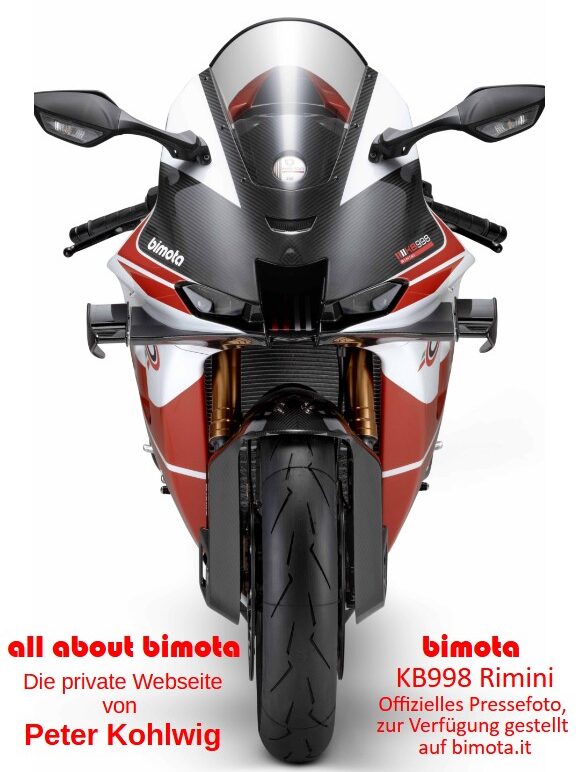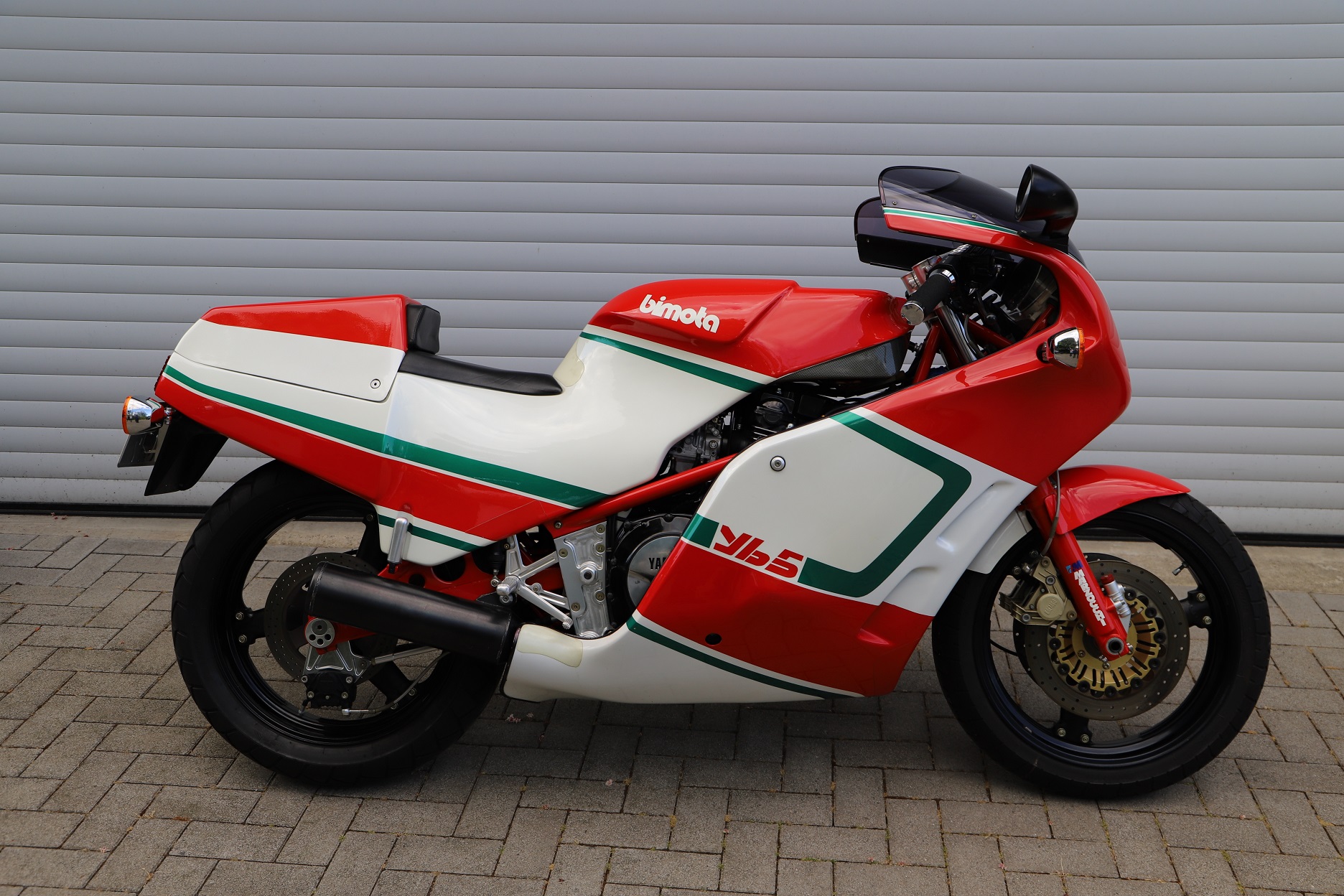
| Designer | Frederico Martini | First presentation | Köln 1986 |
| Production period | 1987 – 1988 | Production numbers | 208 thereof 12 as kits |
| Power | 95 KW (130 PS) | Displacement | 1188 ccm |
| Topspeed | 243 km/h | Weight | wet 230 kg dry 215 kg |
| Price | 31.800 DM (1987) | Colours | 201 white / red /green 7 white / red / grey |
| Technical basis | Yamaha FJ 1200 |
The YB5 is the sixth and final model to use the universal frame introduced with the HB2. Like the SB5, the YB5 is available only as a biposto, meaning a two-seater. After Massimo Tamburini left the company, Frederico Martini introduced several modifications compared to the other models using this frame.
The rear swingarm, like on some SB5 models, received a top brace with perforated gusset plates. The Forcelle Italia fork was replaced with a four-way adjustable, air-assisted 42 mm Marzocchi M1R fork. The front brake discs were enlarged to 300 mm, and the multi-piece riveted aluminum wheels were replaced by black-painted, two-piece 18″ Mavic wheels or, alternatively, one-piece five-spoke magnesium wheels from Campagnolo. With 120/60 tires at the front and 160/60 at the rear, the tendency to stand up under braking in corners was significantly reduced compared to the 16-inch setups of the sister models.
The YB5 also differs visually. In addition to a paint scheme in the Italian national colors, the full fairing was made more modern and aerodynamic by being flatter at the top and extending further downward—reaching in front of the rear wheel and wrapping around the exhaust pipes. The monocoque is identical to that of the SB5.
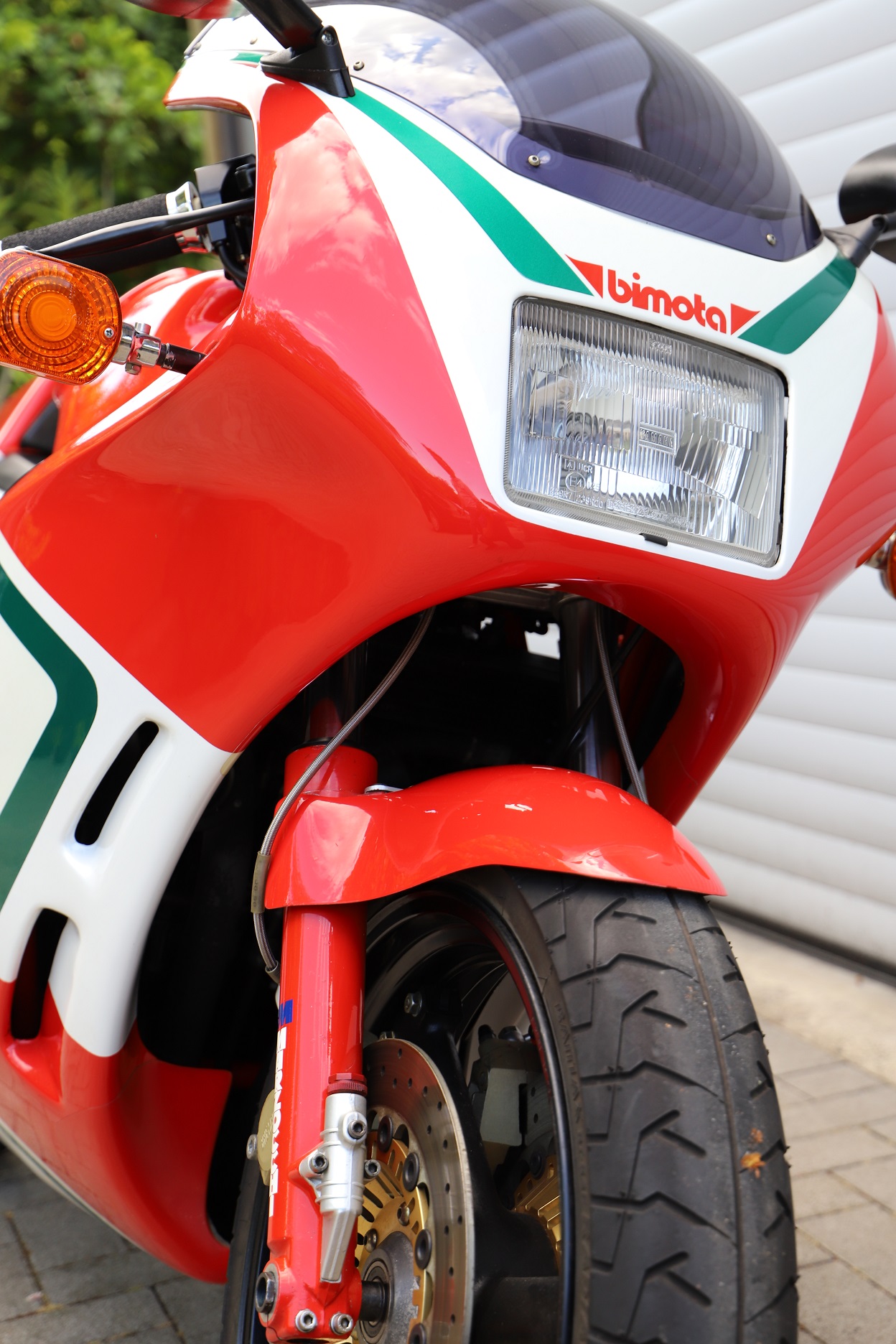
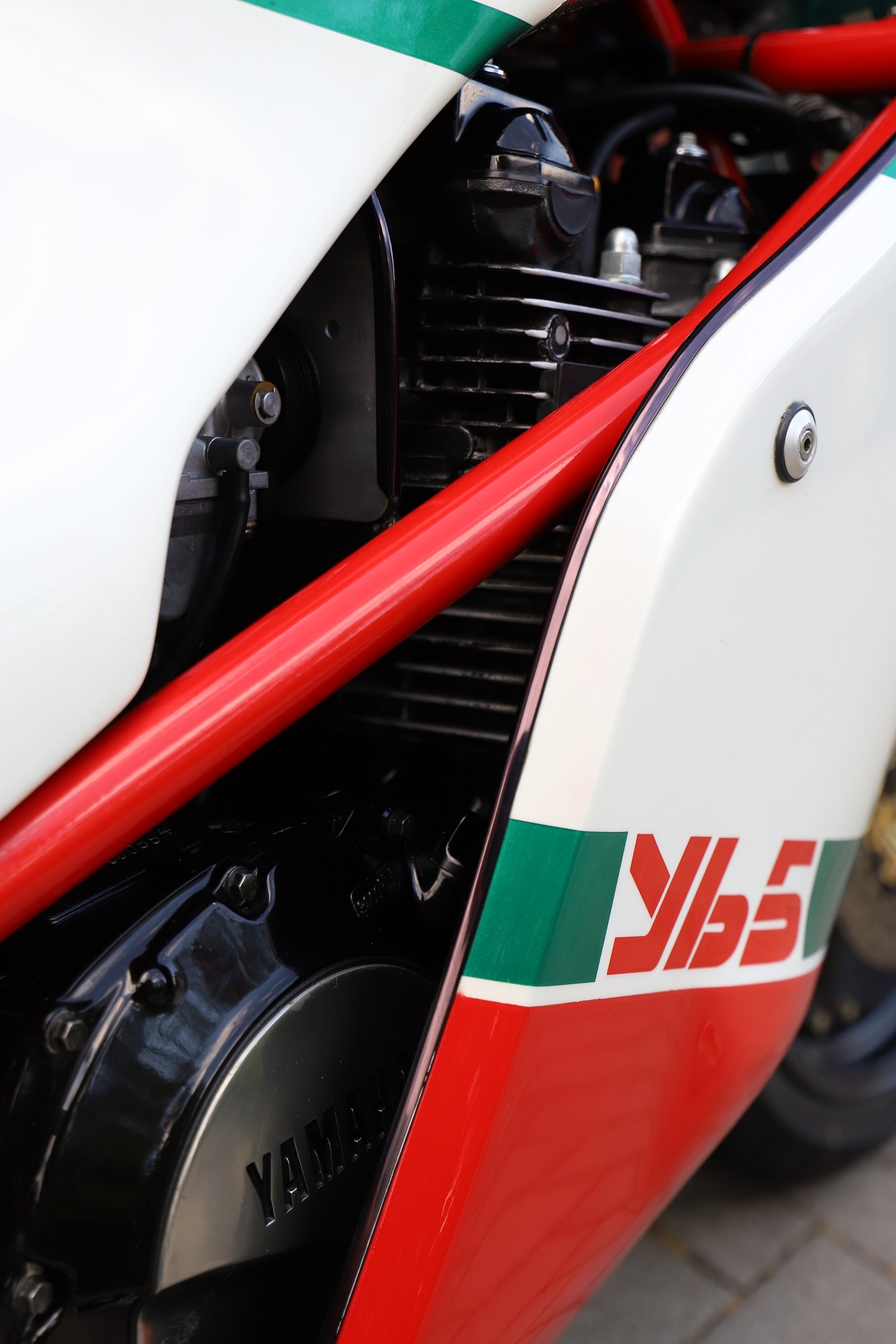
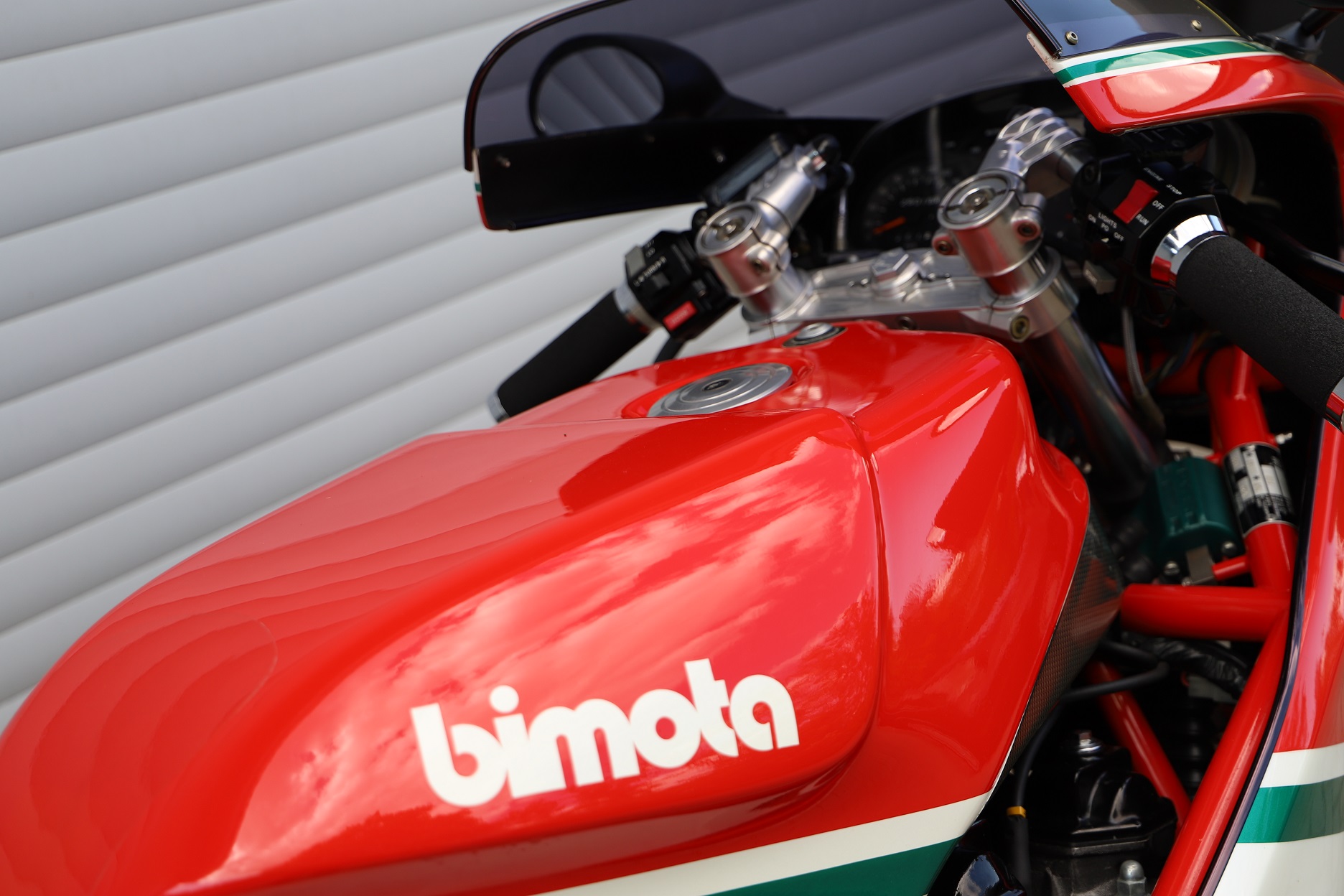
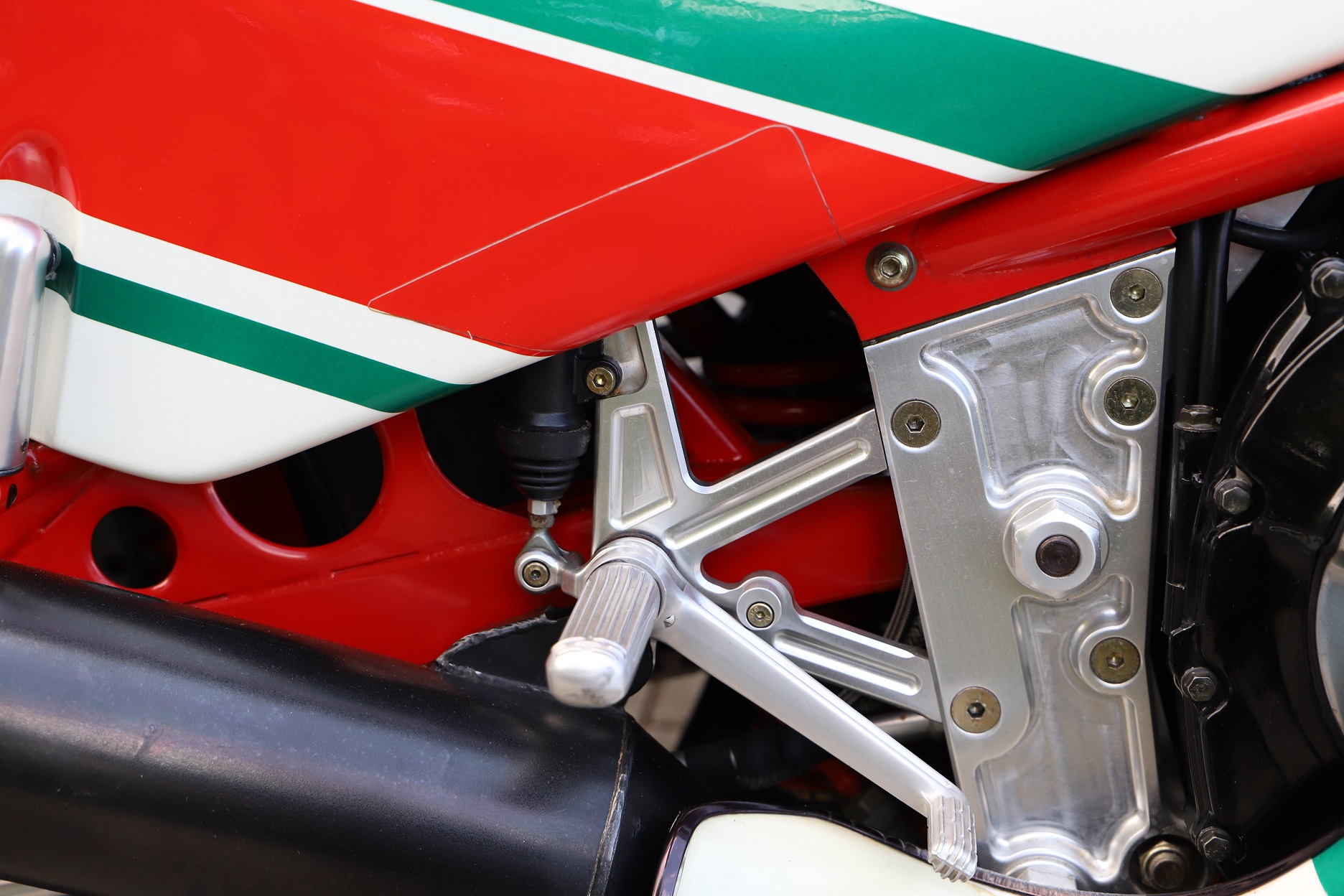
With the air-cooled four-cylinder engine from the FJ1200, the YB5 is the largest-displacement model ever built by Bimota. The DOHC four-valve engine produces 130 hp from its 1188 cc capacity. In a test by the German motorcycle magazine mo in September 1987, its acceleration from 0 to 100 km/h was measured at 2.9 seconds.
The magazine Motorrad had already tested the YB5 prototype in the fall of 1986 and was thrilled with its handling on country roads:
„The rider sits on the small cushion as if welded to the machine. The removable cover of the passenger seat provides solid support, especially during hard acceleration on uneven roads. The knees fit into the tank fairing’s cutouts as if a tailor had taken precise measurements. The bike flicks effortlessly from one lean angle to the next. The rider can completely forget about forceful steering inputs or weight shifts. In fact, they should, as the Bimota is almost too eager to corner—especially for inexperienced riders.“

